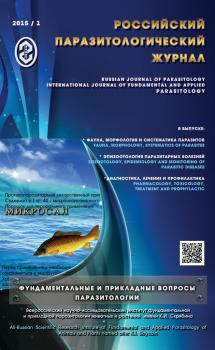Objective of research. As deer are kept year-round on pasture (in summer in tundra in the northern coast of the Russian arctic; in winter — in forest-tundra and northern taiga), biogeocenosis and natural focality of most parasitic and infectious diseases were formed over the years. That should be considered when developing methods for combating them, and to determine the optimal timing of mass treatment and prevention measures. Materials and methods. The question naturally arises, which living and nonliving components ensure pathogen survivability, contribute to the emergence and spread of infectious and invasive diseases. Each disease is characterized by specific factors requiring careful examination and generalization based on the study of clinical records and epizootic diseases in reindeer of the European North of Russia. Results and discussion. Dominant diseases of reindeer in the European region of Northern Russia, requiring greater attention of veterinary experts and against which it is necessary to conduct a regular complex of veterinary, prevention and treatment measures are: anthrax, edemagenosis, cephenomiosis, necrobacillosis, echinococcosis, cysticercosis, rabies, leptospirosis, number of helminthoses (strongylatosis, monieziasis, cysticercosis, etc.). This is a brucellosis-free region, and for many tens years no outbreaks of FMD were reported. The vast majority of the tundra is located in the permafrost zone; the area is dotted with numerous canals, lakes, rivers, streams, marshes, between which in summer on shallow layered soil, grow bushes of willow, dwarf birch, berries, grass and lichen, the main food of deer. The fauna of the tundra is rich and diverse. Here live wolves, foxes, bears, rodents (lemmings, mice), rabbits, birds (geese, ducks, partridges, gulls) and other animals. In summer, “clouds” of midges (mosquitoes, midges, horseflies, flies) are flying in the air. In the region, there are still places virtually untouched by man. However, in recent years, intensive industrial development of the region began to carry out exploration and extraction of oil, gas and other minerals. Oil and gas pipelines, roads, power lines are built which certainly cannot affect negatively the extremely vulnerable nature of the North. For example, reindeer moss trampled or torn down by moving offroaders can be restored only after 7-10 years. Summer season in the North is a very short period, there are usually few warm and sunny days. These negative factors lead to reduced pastures and do not contribute to the growth of the deer population, their health status and fatness.
reindeer husbandry, anthrax, edemagenosis, necrobacillosis, helminthoses, prevention, therapy, corral, technology.
Введение
На огромном пространстве Европейского Севера России, в Большеземельской и Малоземельской тундре выпасается в общей сложности около 350 тысяч оленей. Оленеводство является основой жизни и занятости местного населения и поставляет государству мясо, кожевенное и меховое сырьё, шерсть, панты, рог, камус и пр. Сама по себе отрасль исключительно рентабельная, т.к. со стадом оленей в 3-3,5 тыс. голов успешно справляется бригада из 6-7 оленеводов.
Широкое распространение в оленеводстве имеют и заболевания различного характера, возникновение и распространение которых неразрывно связано со средой обитания. В большей части они имеют природную очаговость, связанную с биогеоценозом местности. Свыше 50% непроизводительного отхода в хозяйствах отмечается за счёт гибели и потерь больных оленей [1-8].
1. Bakulov I.A. Sibirskaya yazva [Anthrax]. M., 1981.187с. (In Russian)
2. Zabrodin V.A.et al. Bolezni severnyh oleney [Diseases in reindeer]. M., 1980. 240 p. (In Russian)
3. Zabrodin V.A., Kazanovskiy E.S. Veterinary problems of reindeer breeding in the European North. Agrarnaya Rossiya [Agrarian Russia], no. 3, 2000, pp. 43-46. (In Russian)
4. Kazanovskiy E.S., Kotlyarov V.N. et al. Dominating infections and parasitoses in reindeer. New principles and methods for anti-epizootic measures in reindeer breeding. Trudy mezhdunarodnoy konf. VNIIVViM [Proc. of int. conf. of All-Russ. Res. Inst. of Vet. Virol. and Microbiol.], 2003, pp. 623-629. (In Russian)
5. Kazanovskiy E.S., Karabanov V.P., Klebenson K.A. Bolezni severnyh oleney [Diseases in reindeer]. Syktyvkar, 2011. 36 p. (In Russian)
6. Kazanovskiy E.S. Veterinarnaya nauka na sluzhbe severnogo olenevodstva [Veterinary science for reindeer breeding]. M., Russ. Acad. of Staff. Agr. and Indust. Compl., 2013, 192 p. (In Russian)
7. Mal’tseva B.M. Veterinary problems of reindeer breeding. Veterinariya. Ref. zhurn. [Veterinary. Abstract journal], 2001, no. 4, pp. 993. (In Russian)
8. Samandas A.M., Layshev K.A., Sivkov G.S. Edemagenosis and cephenomiosis in reindeer. Veterinariya [Veterinary], 2009, no. 9, pp. 32-35. (In Russian)





